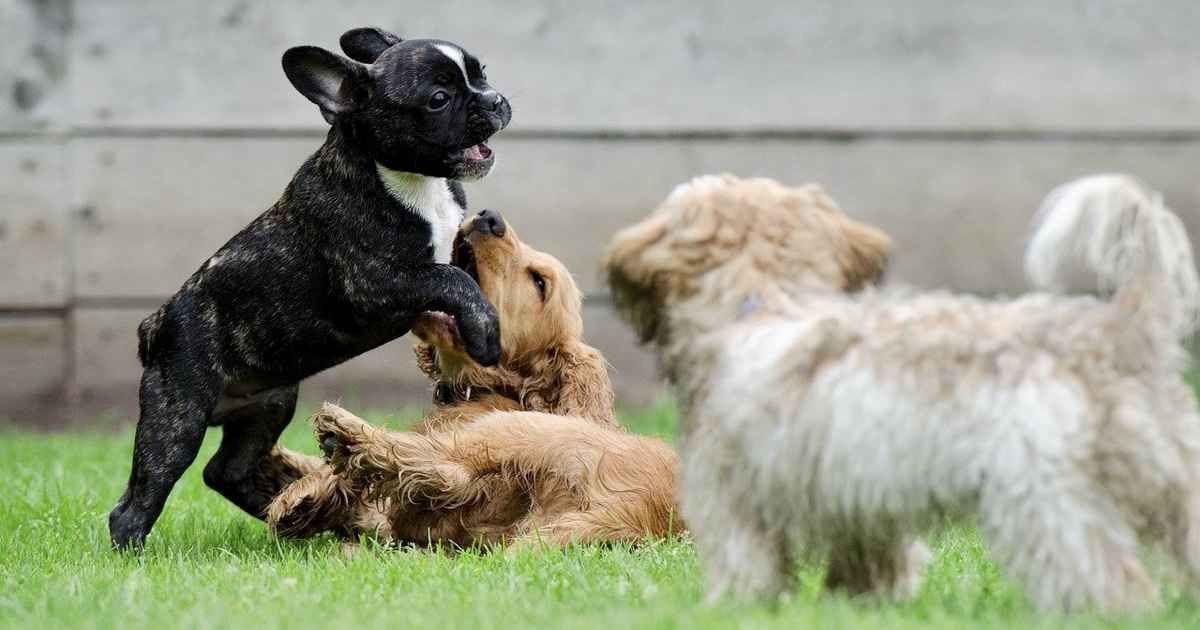Taking your dog into public spaces, such as for a walk around the block or to the dog park, can be nerve wracking and unpredictable but with a bit of knowledge it can be a great activity to do with your pet. Knowing how your pet interacts and socialises with other dogs and their owners is important to ensure you are both having an enjoyable experience.
Impacting upon a dog’s social skills starts young with their peak socialisation period between approximately 2-4 months of age. It is important to expose them to various people and pets in a positive, controlled and safe manner. Puppy schools are excellent for this as your pup is socialised in a supervised environment. These usually start from 12 weeks of age once they have had their second vaccination. Avoid dog parks and other high-risk areas until they have completed their puppy vaccinations.

Dog parks are not always suitable for all dogs, especially those that can be nervous or fearful, or those that have a ‘bold and assertive’ personality. Often owners believe that taking their dog to the park is a good way to teach their dog to socialise. Unfortunately, you can instead be at risk of flooding your pet. Flooding means they are exposed to a highly stressful event over a short period of time whilst being unable to escape. This can create undesired behaviours. A sign that your dog may be uncomfortable in this environment is if they spend most of their time near or behind you.
Some things we can do to enhance our furry friends’ time at the park is to;
- Wait to enter the park until it is clear. If there is a group of dogs near the gate, wait until they have passed.
- Supervise your dog at all times.
- Keep your leash on you. It can be useful when your pet is getting to know a new friend. Allow them to sniff each other out, but you can create space if necessary.
- Keep moving! People grouping together will attract more dogs and has a higher chance of possible problematic interactions.
- Leave the park on a positive note to reinforce that it has been a good experience.

Respect other owners and ask their permission before allowing your dog to greet theirs or patting their pooch. Do not be offended if they say no, they are probably just trying to do what is best for their pet.
Leash walks present another form of socialisation and some dogs may behave very differently on leash as opposed to off of it. Most owners would like for their dog to greet other dogs on their walks calmly and to have happy interactions. Unfortunately, this is not always a realistic expectation. When we humans go for a walk, most of us are not saying hello to every person we pass, we should not expect our dogs to do so either. The more realistic goal is for your dog to walk calmly past other people and dogs without greeting or aggressive responses.

If your pooch is not up to this task yet, then strip things back to basic to modify this behaviour. Consider walking them at a quieter place / time of day. When they are comfortable with this activity, progress to passing by other dogs at a distance, for example across the street. Over time you can hopefully lessen the distance. Give a few simple commands (such as ‘sit’, ‘stay’) with a treat / reward as the dog and their owner pass by, stop once they are gone. You are trying to create a positive association while being approached. If your pet is not complying or taking treats then more distance may be required. Keep these activities easy, brief and enjoyable for your pet.
Basic training is vital for socialising your pet. You have a much greater chance of positive interactions if your pet is able to focus and respond to your commands. Recall recognition is especially important when outside of the home. Just because your dog knows their name doesn’t always mean they are good at recall.
Remember, not all dogs socialise in the same manner just as we all have different social styles. Respecting other owners and their boundaries will help to create safe and enjoyable outings for everyone.






